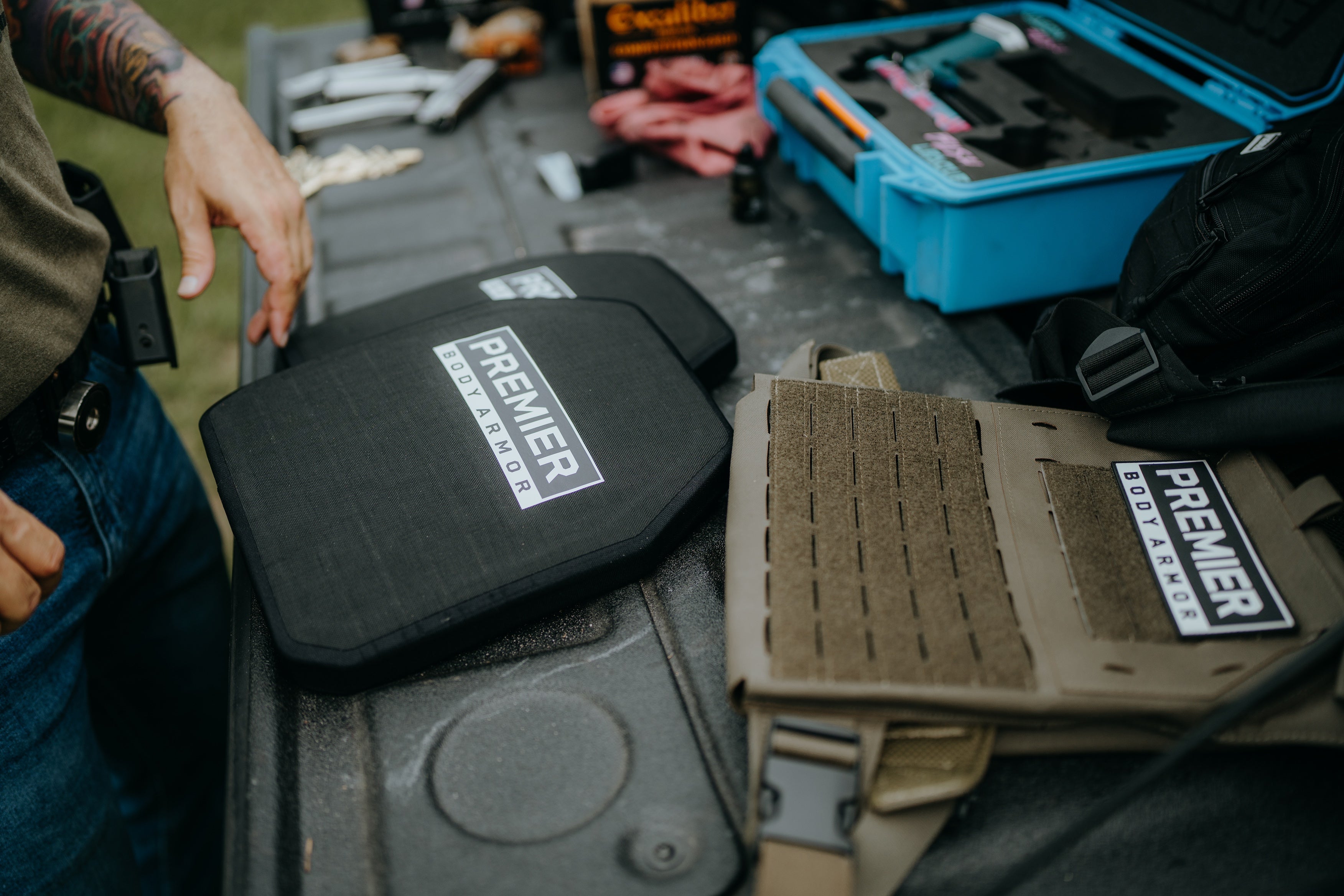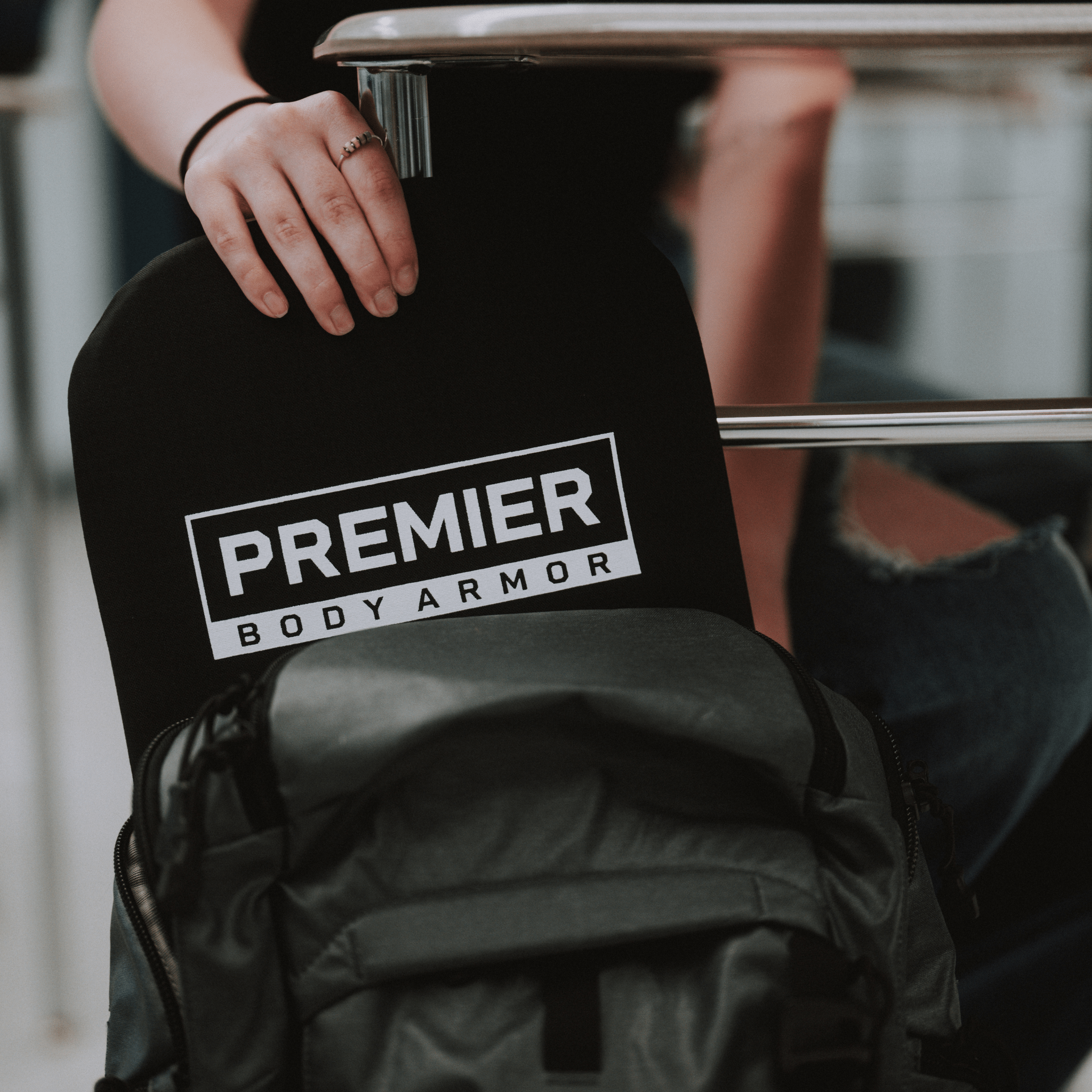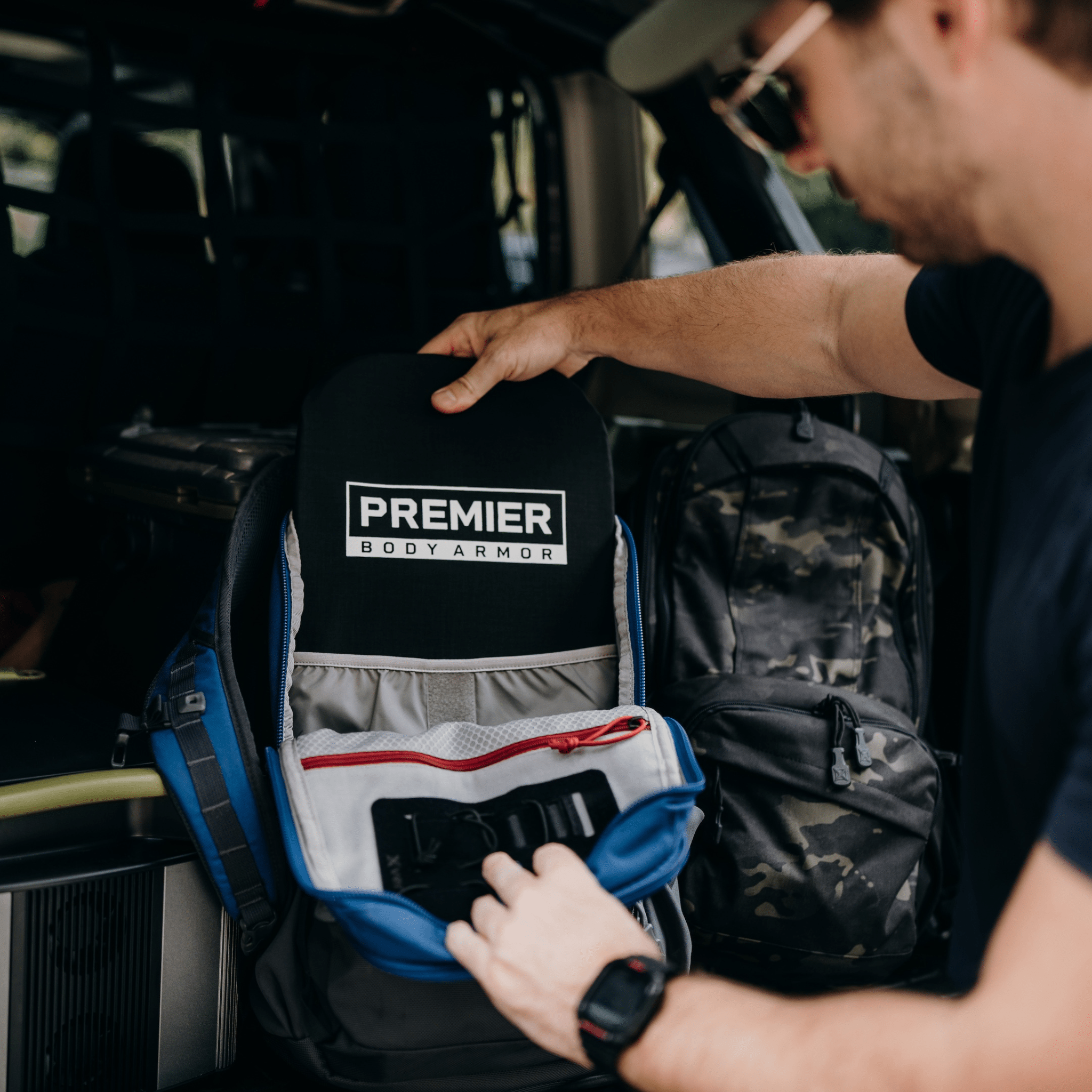How to Choose the Best Body Armor
Body Armor Buyer’s Guide: Choosing the Best Body Armor
There are many types of body armor and knowing which is best for you is important when making a purchase. There are numerous factors to consider. At Premier Body Armor, we are dedicated to ensuring all our customers have the information they need to make informed decisions when buying body armor. We're going to break this down by the following subjects to help guide you through making the right purchase of body armor for your mission:
- What is Body Armor?
- What are the National Institute of Justice (NIJ) Protective Body Armor Ratings?
- Why Does Made in the USA Matter? What is Berry Complaint Armor?
- What are the Different Types of Body Armor?
- What Materials is Body Armor Made From?
- Understanding Different Types of Rifle-Rated Plates
- What Does ICW Mean?
- What Does Standalone Plates Mean?
- Why Are the Plates Typically Only 10"x12"?
- What's the Difference Between ESAPI's Cut, Swimmer's Cut, Shooter's Cut
- How Do I Know If I Need a Spall Liner?
- Is it Illegal to Own Body Armor?
- Can You Travel with Body Armor?
- How Do I Know Which Body Armor is Right for Me?

What is Body Armor?
Simply put, body armor is protective gear that is worn or carried and is designed to deflect bullets, knife blades and other deadly weapons, which may cause physical harm. Bulletproof vests, plate carriers and backpack inserts are all samples of body armor. In general, there are two kinds of body armor – soft and hard. Which one you choose greatly depends on what you intend to use the body armor for.
Soft Body Armor - Soft body armor is more flexible and can be bent in different directions. Soft body armor is more comfortable to wear in bulletproof vests and plate carriers. Bulletproof backpacks and backpack inserts are often comprised of soft body armor, as it is easier and more practical to carry. Soft body armor is generally rated for small arms, so if you need something designed to stop more powerful projectiles, such as an assault rifle, than looking at hard body armor is a better choice.
Hard Body Armor - Hard body armor provides enhanced protection and is meant for high-risk situations, such as law enforcement, military or even hunting activities. Hard body armor consists of reinforced materials, such as steel, ceramic, or polyethylene, making it less flexible and more difficult to conceal, but has a greater power of protection. We’ll dive further into the pros and cons of materials used to make rifle rated armor plates, and we’ll also explain the various types of plate cuts further into this blog.
Another thing to consider when purchasing body armor is the NIJ rating of the product. Not all soft and hard body armor provides the same level of protection. In everyday situations where a handgun is more likely, a lower NIJ rating may be sufficient, whereas in situations where a higher caliber may be used, a high NIJ rating is often recommended.
What Are National Institute of Justice (NIJ) Protective Body Armor Ratings?
The NIJ has designated five rating levels given to body armor depending on the armor’s ability to withstand increasingly higher velocities of impact. Again, which level you choose depends on what you’re trying to protection from. For a more in-depth look at the NIJ Standards, check out our Understanding Body Armor Ratings blog!
-
NIJ Level IIA Body Armor – designed to deflect low velocity weapons, such as the 9mm handgun. Made from a thin layering of protective fabrics, this level of body armor provides the least amount of protection. Premier Body Armor does not sell any protection rated at NIJ Level IIA.
-
NIJ Level II Body Armor – made from a thicker material and can handle higher velocity handgun ammunition. Level II rated Body Armor is commonly found on bulletproof vests.

-
NIJ Level IIIA Body Armor – defends against all handgun rounds with store bought ammunition, including the .44 Magnum. All Premier Body Armor vests and all of our backpack armor are rated level IIIA.

-
NIJ Level III Body Armor – lowest level rated for rifle fire, Level III Body Armor is designed to protect against non-body armor piercing ammunition, such as from the AK-47. Occasionally you will see body armor rated at IIIA+, however this is not an officially recognized level and can mean different things depending on the manufacture. At Premier Body Armor, it means that the armor has been “Special Threat Tested” to exceed standard NIJ testing.

-
NIJ Level IV Body Armor – highest level of protection available, Level IV Body Armor is designed to protect against armor piercing rifle fire with bullets made of a steel core. This is the level of armor provided to combat soldiers. Premier Body Armor’s Stratis Enhanced Plate is rated Level IV.

Why Does Made In the USA Matter?
The materials that go into producing a product designed to save your life matter. Oftentimes companies may advertise “Made in the USA” but are not Berry Compliant. You can find out why Made in the USA doesn't always mean it's Berry Compliant here. Their products may be manufactured in the USA, but the materials may be sourced from other countries that have little regulation to quality control of those materials. It’s best practice to look for Made in the USA and Berry Compliant.
What is Berry Compliant Armor?
In addition to the NIJ rating, it is important to consider whether or not the body armor you are looking to purchase is Berry Compliant. The Berry Amendment was originally created for companies who wished to acquire Department of Defense contracts. However, it is not just limited to times of war.
To be Berry Compliant, 100% of a product’s materials must be sourced in the United States and all manufacturing of the product must be done domestically.

That's why at Premier, all of our armor is not only manufactured in the USA, but every fiber used to produce our armor is domestically sourced. Even more so, that's why our armor is often double, even triple the industry standard by it's warranty. Domestically sourced materials lead to higher quality, leading to more durability, and finally, a longer lifespan.
This is particularly important when it comes to life-saving body armor to ensure that it is rigorously tested and meets the high-quality control standards set by the NIJ and the United States government.
What Are the Different Types of Body Armor?
There are many different types of body armor. Depending on the intended use, some are more practical than others.
-
Bulletproof Vests – designed to be worn, bulletproof vests protect the torso from physical harm. Bulletproof vests come in both soft and hard body armor but cannot be modified. While bulletproof vests are bulkier and more difficult to conceal, there are more discreet options available on the market.

-
Plate Carriers – like a bulletproof vest, plate carriers are designed to be worn around the torso, however the vest itself does not provide protection, which instead comes from body armor plates that can be removed and replaced as desired.

-
Bulletproof Backpacks and Bags – designed to withstand bullets in a similar manner to a bulletproof vest, however instead of wearing it, it is carried. Protection comes from plates inserted into the material. Bulletproof backpacks and bags can be heavy and may be less practical for everyday use.
- Bulletproof Inserts – different from bulletproof backpacks and bags in that bulletproof inserts are designed to fit in any ordinary backpack or bag. Like a plate carrier, the inserts can be removed and replaced as needed. This is an excellent option for school aged children or business professionals to provide not only protection, but peace of mind as well.

What Materials is Body Armor Made From?
Body armor is made from a variety of materials and depends greatly on the type of body armor and level of protection. The most common are:
-
Polyethylene – one of the most widely-used plastics, polyethylene is also the most common material found in body armor. Ultra-High-Molecular-Weight Polyethylene (UHMWPE) is a specific type of polyethylene designed to provide high-level protection against rifle fire. Despite its relative lightness, it is stronger than steel. Polyethylene armor is typically a favorite amongst law enforcement officers and military alike. Polyethylene is multi-hit capable unlike ceramic plates. Typically these armored plates come at a higher price, but for the perk of higher quality, durability, and overall protection over time.
-
Kevlar – a high density, synthetic fiber used to reinforce protective gear. Kevlar is typically what is found in level IIIA or lower ratings of armor. It is a soft, flexible armor that is extremely lightweight. While it is good at protecting from smaller handgun ammunition, it is not designed to protect against rifle fire on its own.

- Steel – a low-cost, highly effective material, steel is commonly found in bulletproof plates and inserts and provides a high level of protection against multiple types of ammunition. Body armor made from steel is often very heavy to carry, may not be good for everyday use, and causes spall which can be life threatening. Spalling is further explained below. Another effective, yet more practical option due to its relative weight is armor made from ceramic.
- Ceramic - these plates are typically composed of tiles that stop a projectile. One of the cons of using ceramic plates is their lifespan. Once a bullet hits the plate, or if the plate is dropped and cracks, it is not longer able to be used. For instance, ceramic plates are not multi-hit capable. Why? Because by design, the ceramic stops the bullet, but the rest of the plate’s strikeface is cracked and ruins the overall integrity of the plate. Another concern to consider with ceramic armor plates is that it is a heavier alternative to a polyethylene plate.
Understanding Types of Rifle-Rated Plates
What does ICW mean for rifle-rated plates?
ICW stands for “In Conjunction With.” Essentially this means that these plates must be used with level IIIA soft armor so that the plate must meet NIJ ballistic ratings. It’s a nice armor option if you’re carrying level IIIA soft armor everyday and only add rifle-rated armor plates for a higher threat level situation. If you’re not carrying level IIIA armor everyday, then you’re better off getting an armored plate that is standalone.
What does Standalone Plates Mean?
Standalone plates mean that the armor plate does not require level IIIA soft armor to achieve it’s NIJ ballistic rating. The plate is ready to go on it’s own. If you’re looking to only use plates for rifle-fire situations, then you’ll definitely want to go with Level III or Level IV body armor plates that are standalone.
Why are the plates typically only 10”x12”?
The purpose of armored plates are to give protection to your vital region, or cardiac box. The 10x12 plate covers a region that, if shot without armor, would be fatal. Anything outside of the vital region should be treated with a bleed control kit.

What’s the difference between ESAPI cut, Swimmer’s Cut, Shooter’s Cut and More…
ESAPI Cut Plates
ESAPI stands for Enhanced Small Arms Protective Insert. This cut is identical in size and shape to a SAPI cut plate. ESAPI cut armor plates have slightly more coverage than a Shooter’s Cut or Swimmer’s Cut plate. However, the trade off for more coverage may be less mobility than a Shooter’s Cut or Swimmer’s Cut plate.

Shooter’s Cut Plates
The intention behind the design of the Shooter’s Cut plate is pretty straightforward to it’s name. It is built for shouldering a rifle, mobility, and most often applied for active shooter situations. It does have slightly less coverage in the shoulder as it narrows to the top of the plate. This taper allows the shoulders to roll forward more when firing a handgun, or gives more of a mounting space when shouldering a rifle.
Swimmer’s Cut Plates
Much like the Shooter’s Cut plates, the Swimmer’s Cut plates were designed for the purpose of mobility. The Swimmer’s Cut gives a full range of motion in the shoulders. However in this case, the more mobility offered can also mean less ballistic coverage.
How can I Decide Between the Various Types of Plate Cuts?
Ultimately when deciding which cut of body armor to choose comes down to the user's preference and the user’s intention. If you’re anticipating using your rifle-rated armor plates in an active shooter situation, I would recommend the Shooter’s Cut plate as it’s great for protection while firing a weapon from your shoulder. If you’re looking for maximum coverage for your plate armor, I would definitely recommend the ESAPI cut rifle-rated armor.
How do I Know if I Need a Spall Liner for My Body Armor Plate?
In order to understand the purpose of a spall liner, first we need to talk about spall. Traditionally steel plates were used for rifle-rated protection. When a projectile impacts the strike face of a steel plate, the projectile breaks into fragments, and creates spalling.

If someone is shot while wearing a steel plate, the spall that ricochets off the strike face can cause life-threatening injuries. Hence, the necessity of a spall liner. The spall liner helps to catch the spall and keep it from causing injury.
Ceramic and polyethylene plates do not spall because their strike face is entirely different. When a projectile impacts the strike face of a ceramic or polyethylene plate, the projectile will deform against the strike face and dents the plate. The ceramic or polyethylene more so absorbs the energy of the projectile, rather than deflecting the projectile’s energy like a steel plate.
Is It Illegal to Own Body Armor?
There is a general misconception that body armor is only allowed for use by law enforcement, military, and first responders. In the United States, it is legal for almost any civilian to purchase and use body armor. However, there are several things to know:
- Armor can only be worn for permitted, legal uses by law-abiding citizens
- Convicted violent felons cannot purchase or wear body armor
- Crimes committed while wearing body armor will result in high penalties
- Different states have different rules and regulations when it comes to purchasing body armor. For example, in Connecticut body armor can only be purchased face-to-face and cannot be shipped directly to a civilian. Under a law passed in 2022, body armor can not be shipped to the state of New York.
Can You Travel with Body Armor?
Yes, in most instances you can travel with body armor. If traveling by air, the TSA does allow you to carry body armor, however vests and plate carriers cannot be worn at anytime while in the airport or onboard a plane. In the United States, body armor can be carried over state lines, but it is important to be familiar with the rules and regulations of each state. When it comes to traveling internationally, each county sets its own regulations.

How do I Know Which Body Armor Is Right for Me?
If it’s your first time using body armor, we typically recommend purchasing our backpack armor or Everyday Armor T-Shirt. We recommend getting familiar with concealable armor and understanding body armor ratings. For the vast majority, level IIIA body is necessary as handguns are used in most shootings.
Most people assume to go for the highest rated armor, but chances are, you won’t need level IV body armor plates unless you’re in the military or in some cases security or law enforcement.

In the end, the type of body armor you buy greatly depends on the threat level you are trying to protect yourself from. If you’re in law enforcement or likely to encounter higher caliber rounds, then a greater threat level of protection for your body armor system may be the way to go.
If you’re looking for something for peace of mind that can be used daily, perhaps in a school or office setting, lower level (yet effective) armor may be better suited for you. All body armor combined with good situational awareness skills can be life-saving. It is important to take the time to do your research. In the end, only you can decide which type of body armor is best for you.










Excellent information and recommendations!
20 year US Army Infantry Vet
Leave a comment